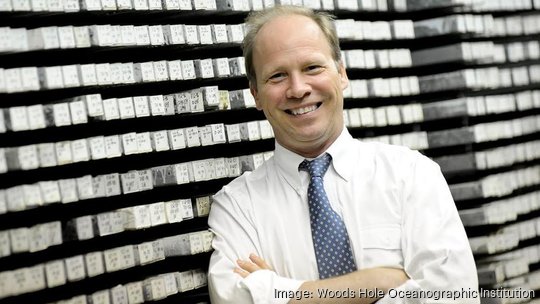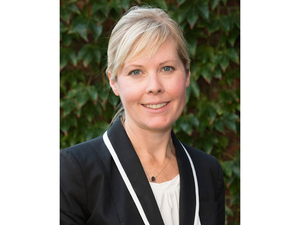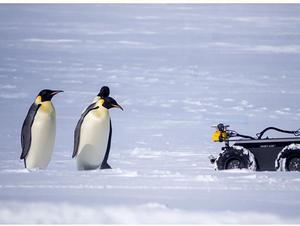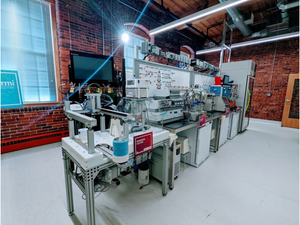
The ocean might be the largest untapped resource to address climate change and rising global temperatures, according to Peter de Menocal, president and director of the Woods Hole Oceanographic Institution.
The ocean is capable of being a “hero” in regulating climate change, de Menocal said. Already, the ocean is a natural source of carbon dioxide storage, and it has the potential to do a whole lot more.
A new $25 million gift to WHOI from the chair of its board of trustees, Paul Salem, will help the institution accelerate its work to unlock that potential.
“Paul wants action,” said de Menocal.
Marine carbon removal is one area of ocean climate solutions getting a lot of attention from researchers. The ocean covers 70% of the earth, and it is the largest active carbon reservoir on the planet. It can absorb up to 25% of carbon emissions into the atmosphere, and researchers believe it has the capacity to do much more, de Menocal said.
But how that increase in carbon absorption will look, and how safe it will be, still needs to be tested, de Menocal said.
If you could gather all the carbon dioxide currently in the atmosphere and mix it into the ocean, it would equate to roughly 1% of the current carbon reservoir, he explained. Taking up carbon is something the ocean does naturally.
There are three main ways researchers are looking to increase the carbon-absorption properties of the big blue sea.
The first is enhancing the ability to grow kelp and sink to the bottom of the ocean. The deep waters can then store the kelp-sequestered carbon for a cosmically long time. The second, similarly, is stimulating algae growth in waters and sinking it, too. The third method is increasing alkalinity of the ocean through dissolving certain materials like limestone, which would make the ocean work as a chemical sponge.
A “wave” of blue carbon solution ideas have been presented over the recent years, but most are novel and untested in practice, de Menocal said.
“The challenge is that in order to prove it works and is safe, or not, it will require oceanography at a much greater scale than in decades past,” he said.
The gift from Salem is intended to help WHOI do that. The new funding will be applied to what de Menocal described as “high risk, high reward” initiatives. The money is not earmarked for specific projects, but the institute plans to use it for projects that might seem too novel or risky to draw government funding until they're proved.
The donation adds to the more than $85 million WHOI has previously received for its initiatives over the past three years for its climate research from public and private funders.
The institution is conscious of ensuring that the science can keep pace with the capital invested, to ensure that potential unintended consequences of certain carbon-removal methods don’t become harmful.
“We’ve got quite a bit of funding now to mobilize,” de Menocal said.
Sign up for The Beat, BostInno’s free daily innovation newsletter from BostInno reporter Isabel Tehan. See past examples here.







